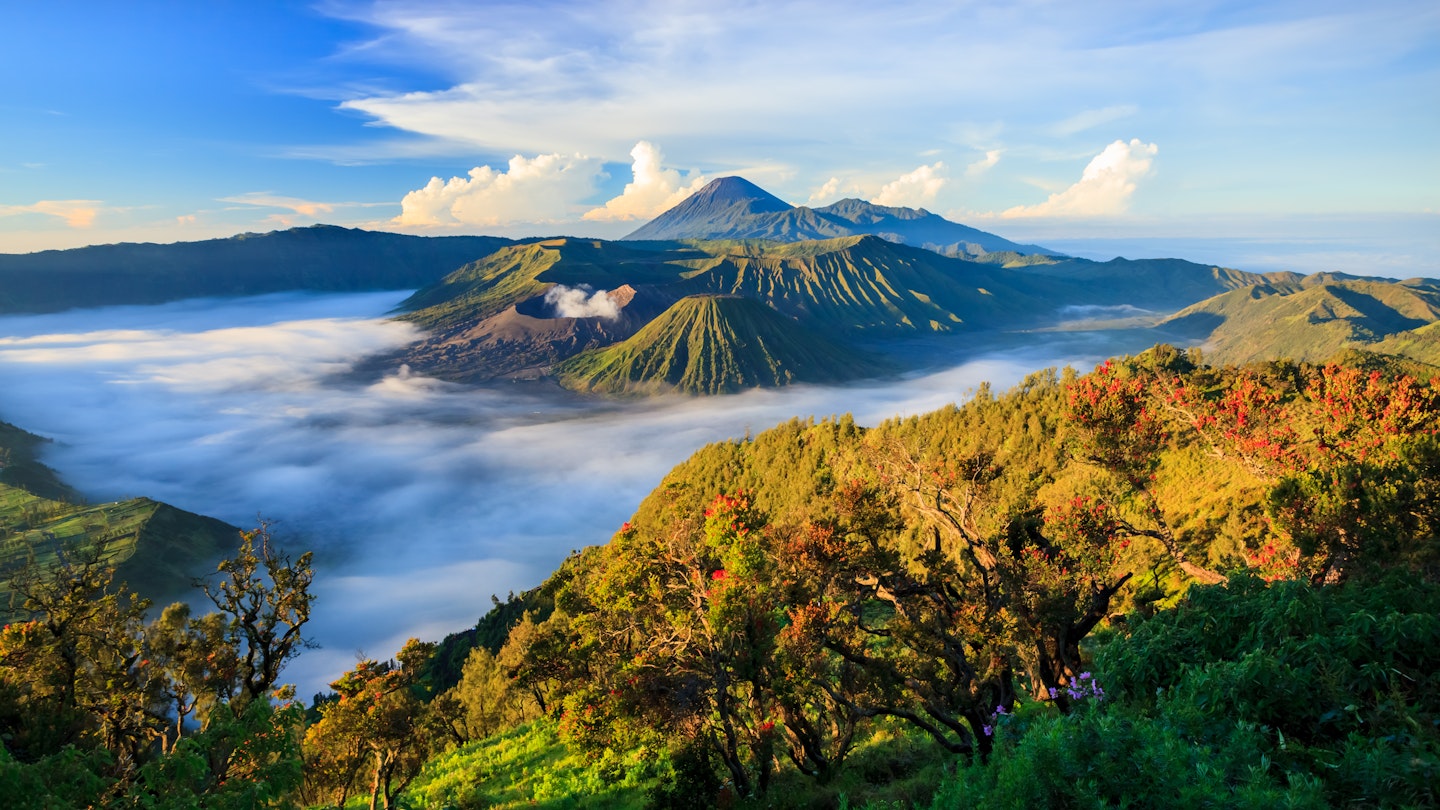Explore Java: A Guide to Top Destinations with GoTravelDaily
A whopping 151.6 million people – that’s over half of Indonesia’s population – call Java home, making it the most populated island on earth.
From soaring peaks and fertile heartlands to postcard-perfect islands and vivid underwater scenery, Java’s natural landscapes are as astonishing as they are diverse. The urban areas offer a real contrast, filled with vibrant art, culture, and history.
However, with so much to experience and cover, a slower pace is often the preferred approach. The well-established rail network provides the easiest and most comfortable way to navigate this beautiful island.
1. Jakarta
Best for shopping and history
Indonesia’s megalopolis is an intricate mass of congested roads and towering skyscrapers. While many dismiss it as merely an economic and political hub, there is an abundance of culture and history waiting to be discovered. Explore the Dutch heritage in the Old Town or visit museums showcasing ancient civilizations and traditional textiles. For shopping enthusiasts, Blok M features a sprawling market with affordable options, while Glodok, Jakarta’s Chinatown, is alive with open-air markets and delicious street food.
Planning tip: Jakarta’s public transport system includes LRT, MRT, and buses, but it tends to be quite busy. It’s advisable to avoid traveling during peak hours.
2. Kawah Ijen
Best for hiking the famous blue-flamed volcano
At 2,769 meters (9,085 feet), Kawah Ijen is one of Indonesia’s most unique volcanic attractions, known for its stunning blue fire phenomenon. The trek typically begins late at night or in the early morning, taking about two hours but allowing for longer if needed due to the steep trails. The summit boasts the world’s largest acidic crater lake, whose alluring turquoise waters are dangerous due to high sulfuric acid levels.
Planning tip: Memorialize your journey by starting from Banyuwangi, the closest city to Kawah Ijen, which is accessible via ferry from Bali or train from other Java cities.
3. Karimunjawa Islands Marine National Park
Best for scuba diving and snorkeling
The idyllic white beaches and crystal-clear waters of the Karimunjawa Islands create an unmatched escape from the hustle of mainland Java. This marine national park is known for its vibrant coral reefs and diverse marine life, making it a prime spot for snorkeling and scuba diving, especially near Menjangan Besar and Menjangan Kecil islands. Alternatively, take a stroll through the mangrove forests of Karimunjawa Island and observe its native wildlife, including black-tailed monkeys and vibrant parakeets.
Planning tip: Ferries are operational from Jepara or Semarang on the mainland, and speedboats can be chartered for a private experience.
4. Yogyakarta
Best for Javanese art and culture
Often referred to as “Jogja,” Yogyakarta is a remarkable destination that attracts a diverse range of visitors, including students, families, and cultural enthusiasts. Once the epicenter of the powerful Mataram Kingdom, today it remains the only region in Indonesia with a monarchy. Engage in cultural performances such as dance and gamelan (Javanese orchestra) at the Kraton, the royal palace; explore the stunning pools and gardens at Taman Sari, also known as the Water Castle; and dive into local craftsmanship through batik workshops.
5. Borobudur and Prambanan
Best for ancient archaeological sites
A short drive northwest of Yogyakarta leads to Borobudur, the largest Buddhist temple in the world. Visiting at sunrise or sunset provides breathtaking views from its tiered terraces. Similarly, to the east lies Prambanan, a magnificent Hindu temple complex with intricate carvings depicting enchanting tales from Hindu mythology. Don’t miss the lesser-visited yet equally stunning Sewu Temple nearby.
Local tip: Just 5 kilometers (3 miles) from Borobudur is Klipoh Village, known for its traditional pottery. Visitors can take pottery classes and explore the local studios.
6. Dieng Plateau
Best for nature and temples
Referred to as the “abode of the Gods,” the Dieng Plateau captivates visitors with its stunning volcanic landscape, featuring crater lakes and bubbling mud pools. Take in the ethereal scenery, especially in the early morning mist. Hike along the many trails winding through fertile farmland, characterized by crops like potatoes, cabbages, and papayas, all while soaking in breathtaking views of the surrounding volcanoes.
7. Bandung
Best for relaxed city life and culinary tourism
Nestled in the hills of West Java, Bandung is renowned for its art deco architecture and cool café culture, offering a more relaxed vibe than many other Java cities. With tree-lined boulevards and a cooler climate, it makes for an inviting destination. Bandung also serves as an ideal base for excursions to nearby scenic spots, including the breathtaking Tangkuban Prahu volcano.
Local tip: Food lovers will find their paradise in Bandung, featuring a wide array of dining options, from street food to gourmet eateries. Visit Paskal Food Market for a taste of it all.
8. Mount Bromo
Best for epic volcanic landscapes
Part of the Bromo Tengger Semeru National Park, Mount Bromo is regarded as one of the most picturesque volcanoes in Indonesia. Enclosed by an ancient caldera, this volcano captivates visitors with its active displays, making it a popular destination. Access to spectacular viewpoints such as King Kong Hill and Seruni eliminates the need for intense hiking, allowing guests to enjoy the scenery. For those wishing to ascend, a four-wheel drive vehicle will take you to the base, where steep steps lead up to the crater rim.





